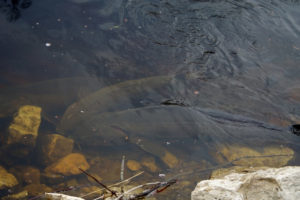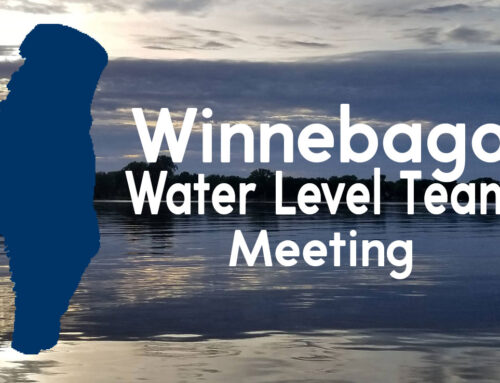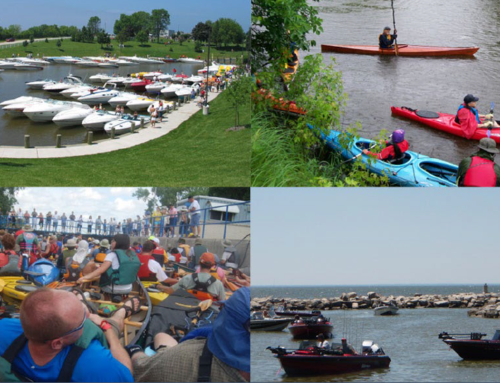 Much of what we think about, feel in our hearts, and then boast or cry about relates to those things that affect – and sometimes, full-out change – our lives.
Much of what we think about, feel in our hearts, and then boast or cry about relates to those things that affect – and sometimes, full-out change – our lives.
And change basically is about contrast. Think of all those fears, joys and polar-opposite dramas that get stirred up by big-time change – the heady contrasts of love/hate, joy/grief, pride/regret, a desire to do-good/the weight of that burden.
It’s how we react to the contrasts between what was, or, what should be, that can guide us toward gifts and greatness, or dump us into despair and defeat.
How did this spring catch you?
Here in north-central Wisconsin, much of what we talk about and react to; what we do, and who we become is related to Nature. Specifically, the seasons’ whims and weather.
With its granite-hard freezes, big dumps snow, and more recently, all the spring rains, snowfalls and summery teases, this weather year has been one of challenging, exciting, scary and certainly memorable changes. Someday, you may say, “Oh yes. I remember, back in THAT spring of oh-nineteen…”
All that ice and snow changed back to water and now we’re pretty much saturated. As I write, river waters cover huge parking lots and command the high-ends of lowlands one day, then retreat to support the blooms of shoreline anglers and spring flowers the next.
Flocks and families of waterfowl honked and quacked their place in the sky as the busy-ness of shorebirds gave flight to winter’s stony still-quiet. Those sticky promising tree buds, the songbirds’ trills, the frogs’ peeping, the unfolding of ferns and friends are all something so old-but-new-again to our senses.
Residential shorelines that buttressed through that winter are regaining their spines and party-place spunk as docks are hauled out, boatlifts set in, tubes tested, campers aired out, and the walleye had better beware.
There’s now an exhilaration of sights and sounds set against the haunting excitement of potential flooding and the relentless beat of SO MUCH TO DO. Our gardens, shorelines, lakes and rivers sing for our heart’s attention. Clean me! Watch me flow! Play on me! Grow me!
Yes, our snowbird friends have returned and are eager to talk about bright beaches and such sun. But we who stayed have survived now thrive amid the thrill of rushing waters, the pull of reedy thick-black mud, and the mystery of re-routed shorelines – here in the awesome rebirth of our liquid Fox-Wolf watershed.

Talk about change? Just hold on. We can’t hold still. Hello, sturgeon-spawn viewing, wild-cold walleye runs, wildflowers of the riparian woods, and all those promises of summer fun on the water! Welcome, garage sales, sunsets’ majesties gliding quickly northward, spring-cleaning, planning for camping, bonfires, parties, and more!
One ritual I’ve enjoyed since childhood is a sweetly simple, deeply solitary one: I rake the small area down along the north side of our boathouse that is the “slip.” It’s a shallow, gentle land-meeting inlet of a place where my cousins pull up their aluminum duck-hunting boats and I land my canoe and kayak.
There’s also an old seining net, some sections of what was a dock, and a bent boat-lift I’d like to fix someday, along with a storage bin packed with scoop nets, crawfish traps, buckets and other stuff that I can grab before going out on the lake or dock.
With high winds and rains, the slip gets rolled-up banks of roiled reeds, sticks, logs, duckweed and sand. Sometimes there’s a red-and-white bobber, stray lure, hunk of rope, clunk of Styrofoam or other spring-freed debris. With this year’s turbulence and high water, heavy, sloppy clumps of ropey-rooted cattail mini-bogs washed up.
My spring-y old metal leaf rakes works wonders. And, while doing that small, perfect chore, I feel so… “me.” It’s the same “me” who has raked the same place down there through about six decades of Winneconne springs. Each different, yet the same.
Sure, changes have taken place. Some have eased into the familiar over lifetimes, within years and seasons, and through days and moments. A small cottonwood tree grew thick; the boathouse faded and was painted at least half-a-dozen time; the dock was a set of planks, then wood sections…now a long reach of plastic pier sections, made to look like something like wood.

No change here: I rake, sling the cattails out onto the point, lug the piles of reeds to compost, re-cycle some of the litter and save those old bobbers. I also listen to the cardinal and other lovesick birds, watch the waves play free, spot an eagle, or synch with the play of a foursome of pelicans soaring overhead.
I see my progress as the slip’s lip clears, and sip a beer. Done.
The raked sand, now just flecked with tiny bits of shells, twigs and duckweed, is what works there under the shadow of that big-old, mostly dead cottonwood tree.
It’s a simple boathouse shoreline joy that I hope to repeat. Repeat.
Fishing, hiking, kayaking, boating, sunset viewing, bird watching, gardening, the arts. I’m sure you have favored rituals and pleasures of spring related to our special land. The Fox-Wolf Watershed Alliance offers ways for us to work to ensure they can continue – that our hopes for this region will be realized; its simple joys perpetuated for others.
The Alliance helps us to appreciate, protect and promote the good health of this hearty, generous, ageless, yet so fragile water system through all seasons.
Perhaps you were one of the 1,077 volunteers who worked to remove garbage and other debris during the April 27 Fox-Wolf Watershed Cleanup at one of the 50-plus sites on the Fox and Wolf rivers, lakes Winneconne, Butte des Morts and Winnebago and other connected waterways.
That’s great! But another way to effectively protect the traditions, wildlife habitats, recreational opportunities, beauty, and – yes, even the seasons’ challenges – is to strive to change our friends, neighbors, co-workers and family members who may be unaware of the work that there is to do, and the financial support that’s welcomed.
It may take some gentle education, some showing-off of what works for you, perhaps some explanation of the science that drives the process to preserve and/or restore.
Consider sharing news about the activities, clubs, civic entities and environments we all can work for. Help others find their way to make a positive change.
We can – some say that we must – change the health of this watershed.
And that’s really something to summer-fall-winter-spring talk about.
 Lynn Kuhns, an award-winning free-lance writer with more than 40 years’ professional writing and publishing experience, lives and writes in Winneconne, WI. Widely read in magazines, newspapers, literary journals and other publications, Kuhns’ articles and columns often relate to the conservation of Wisconsin’s habitats, health and outdoor recreation, and the interactions of nature and the art of being human. She also designs and teaches creative-writing workshops and classes. Contact: writewoodz@charter.net; phone 920-582-0233.
Lynn Kuhns, an award-winning free-lance writer with more than 40 years’ professional writing and publishing experience, lives and writes in Winneconne, WI. Widely read in magazines, newspapers, literary journals and other publications, Kuhns’ articles and columns often relate to the conservation of Wisconsin’s habitats, health and outdoor recreation, and the interactions of nature and the art of being human. She also designs and teaches creative-writing workshops and classes. Contact: writewoodz@charter.net; phone 920-582-0233.





